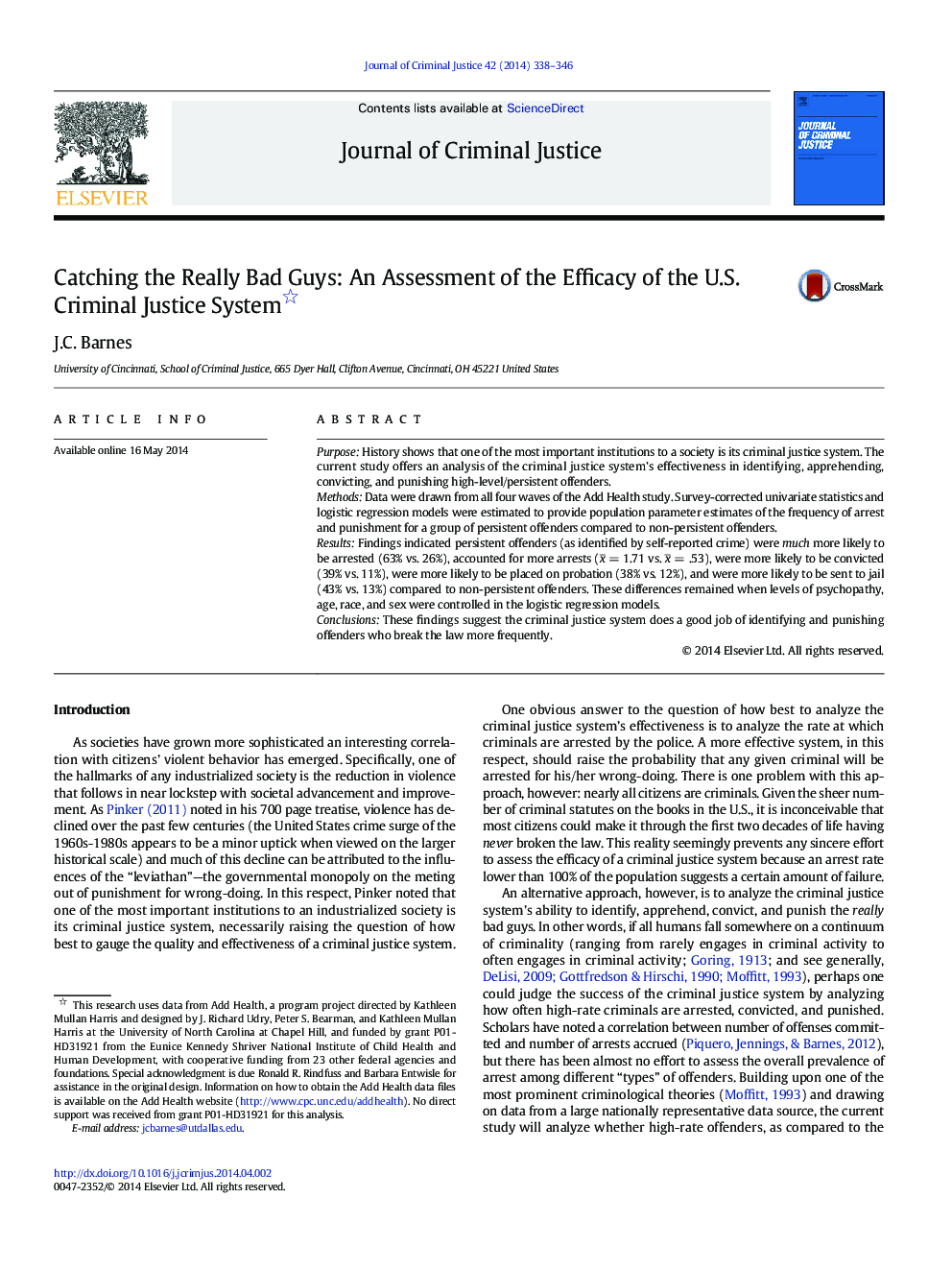| Article ID | Journal | Published Year | Pages | File Type |
|---|---|---|---|---|
| 882673 | Journal of Criminal Justice | 2014 | 9 Pages |
•The efficacy of the criminal justice (CJ) system is important to assess•One approach is to analyze the system’s ability to identify persistent offenders (PO)•Drawing on nationally representative data, this study performed such an analysis•Results show the CJ system does a good job of identifying/punishing POs•POs reported more arrests, convictions, probation, and jail time than non-POs
PurposeHistory shows that one of the most important institutions to a society is its criminal justice system. The current study offers an analysis of the criminal justice system’s effectiveness in identifying, apprehending, convicting, and punishing high-level/persistent offenders.MethodsData were drawn from all four waves of the Add Health study. Survey-corrected univariate statistics and logistic regression models were estimated to provide population parameter estimates of the frequency of arrest and punishment for a group of persistent offenders compared to non-persistent offenders.ResultsFindings indicated persistent offenders (as identified by self-reported crime) were much more likely to be arrested (63% vs. 26%), accounted for more arrests (x¯ = 1.71 vs. x¯ = .53), were more likely to be convicted (39% vs. 11%), were more likely to be placed on probation (38% vs. 12%), and were more likely to be sent to jail (43% vs. 13%) compared to non-persistent offenders. These differences remained when levels of psychopathy, age, race, and sex were controlled in the logistic regression models.ConclusionsThese findings suggest the criminal justice system does a good job of identifying and punishing offenders who break the law more frequently.
